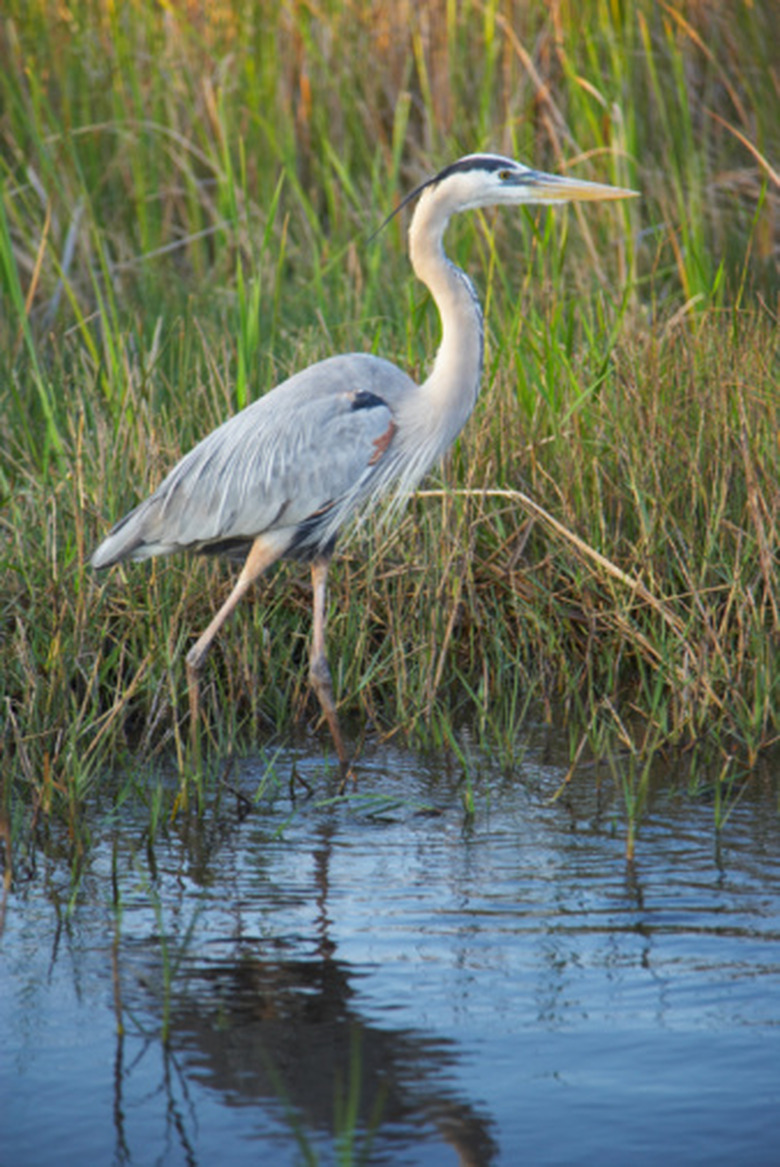Wetland Plants & Wildlife
Many plant and animal species live in the wetlands, including a number of rare and endangered species. The plants that grow in wetlands provide shelter from predators for prey species and nesting areas for birds, while the water gives fish and shellfish a place to spawn. Some animal species spend their entire lives in the wetlands, while others — called obligate species — need to visit the wetlands to breed or raise offspring.
About Wetlands
About Wetlands
Wetlands are areas where the ground is saturated with water or covered in standing water for part of the year. There are several types of wetland habitats. Marshes can hold freshwater or saltwater and are mostly grassy areas with shallow water. Swamps can have deeper water than marshes or be slow-moving rivers or streams. A bog is a type of wetland with freshwater that mostly come from rain, while a fen is a freshwater wetland with highly alkaline groundwater. Over a third of the species listed in the United State's Federal Endangered Species Act depend on these types of wetlands to survive.
Plants
Plants
Three types of plants grow in the wetlands: submerged plants that grow underwater, plants that float on the water's surface and emergent plants, which make up the majority of wetland plants. Plants such as evergreen trees and shrubs can be found in bogs and fens, along with thick mats of sphagnum moss and species of carnivorous plants. Cyprus and mangrove trees live in freshwater and saltwater swamps, respectively. Freshwater marshes contain grasses, wildflowers and shrubs, while saltwater marshes contain rushes, reeds, sedges and saltbush. Wetland plants help the habitat to hold on to water, which keeps local rivers and streams from flooding, and help prevent water erosion.
Wildlife
Wildlife
A variety of animals make their home in wetland habitats. Mammals that might live in wetlands include:
- beavers
- otters
- bobcats
- deer
- minks
- muskrats
Alligators, snakes, turtles, newts and salamanders are among the reptiles and amphibians that live in wetlands. Invertebrates, such as crayfish, shrimp, mosquitoes, snails and dragonflies, also live in wetlands, along with birds including plover, grouse, storks, herons and other waterfowl.
Visiting Wildlife
Visiting Wildlife
Some animals call marshes, bogs and swamps their home, but others stop in the wetlands to breed or nest. Birds, such as pelicans, herons and red-winged blackbirds, use wetlands as nesting sites and as rookeries (areas where social birds nest together). Striped bass, sea trout and other fish use wetlands as spawning grounds and as nurseries for their offspring. Migratory birds, such as Canada geese, whooping cranes and peregrine falcons, often stop in wetlands to rest, while rabbits, frogs and other prey animals use the habitat to provide shelter and to hide from predators.
References
Cite This Article
MLA
Gambrel, Ellie. "Wetland Plants & Wildlife" sciencing.com, https://www.sciencing.com/wetland-plants-wildlife-8254793/. 22 November 2019.
APA
Gambrel, Ellie. (2019, November 22). Wetland Plants & Wildlife. sciencing.com. Retrieved from https://www.sciencing.com/wetland-plants-wildlife-8254793/
Chicago
Gambrel, Ellie. Wetland Plants & Wildlife last modified March 24, 2022. https://www.sciencing.com/wetland-plants-wildlife-8254793/
